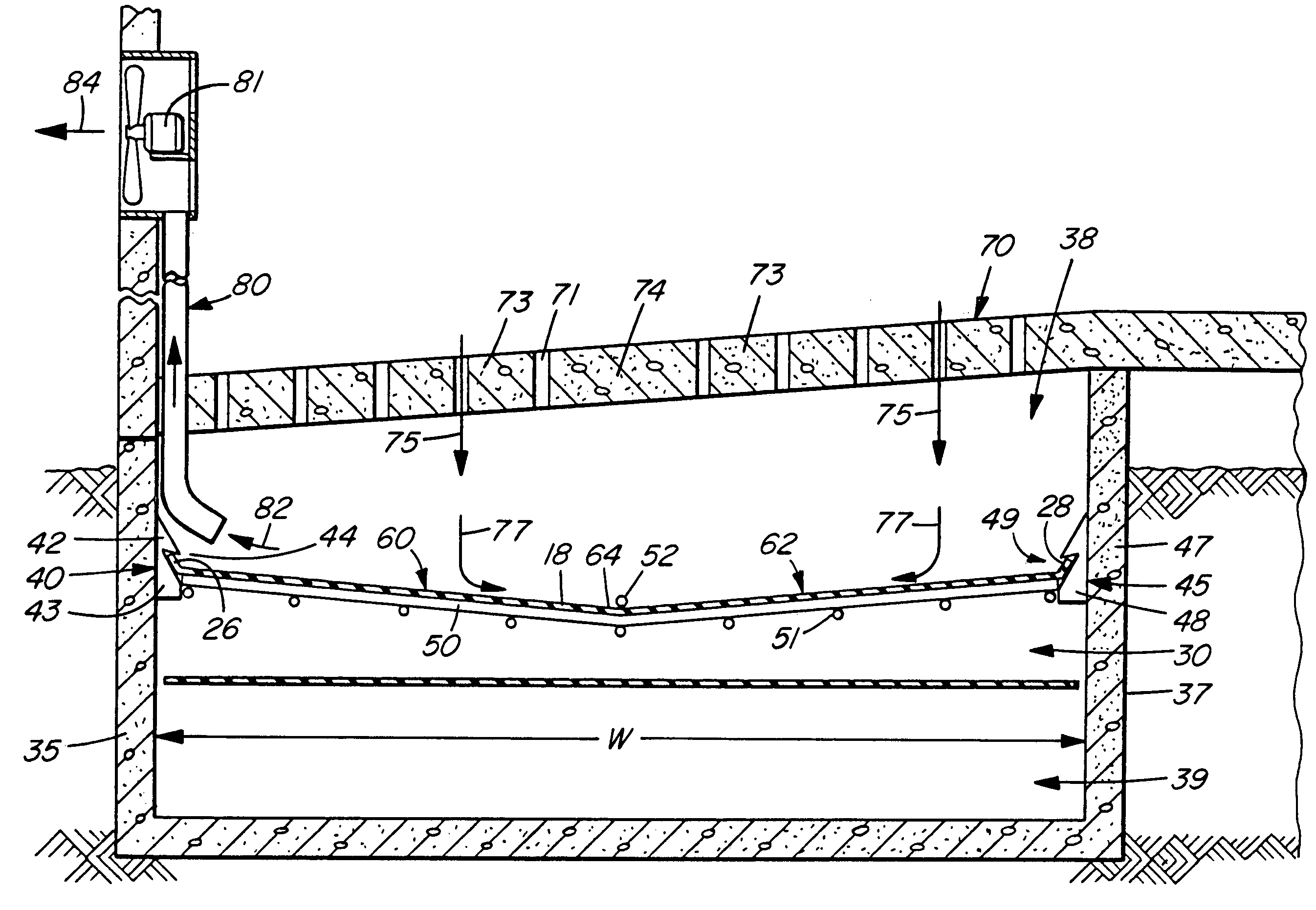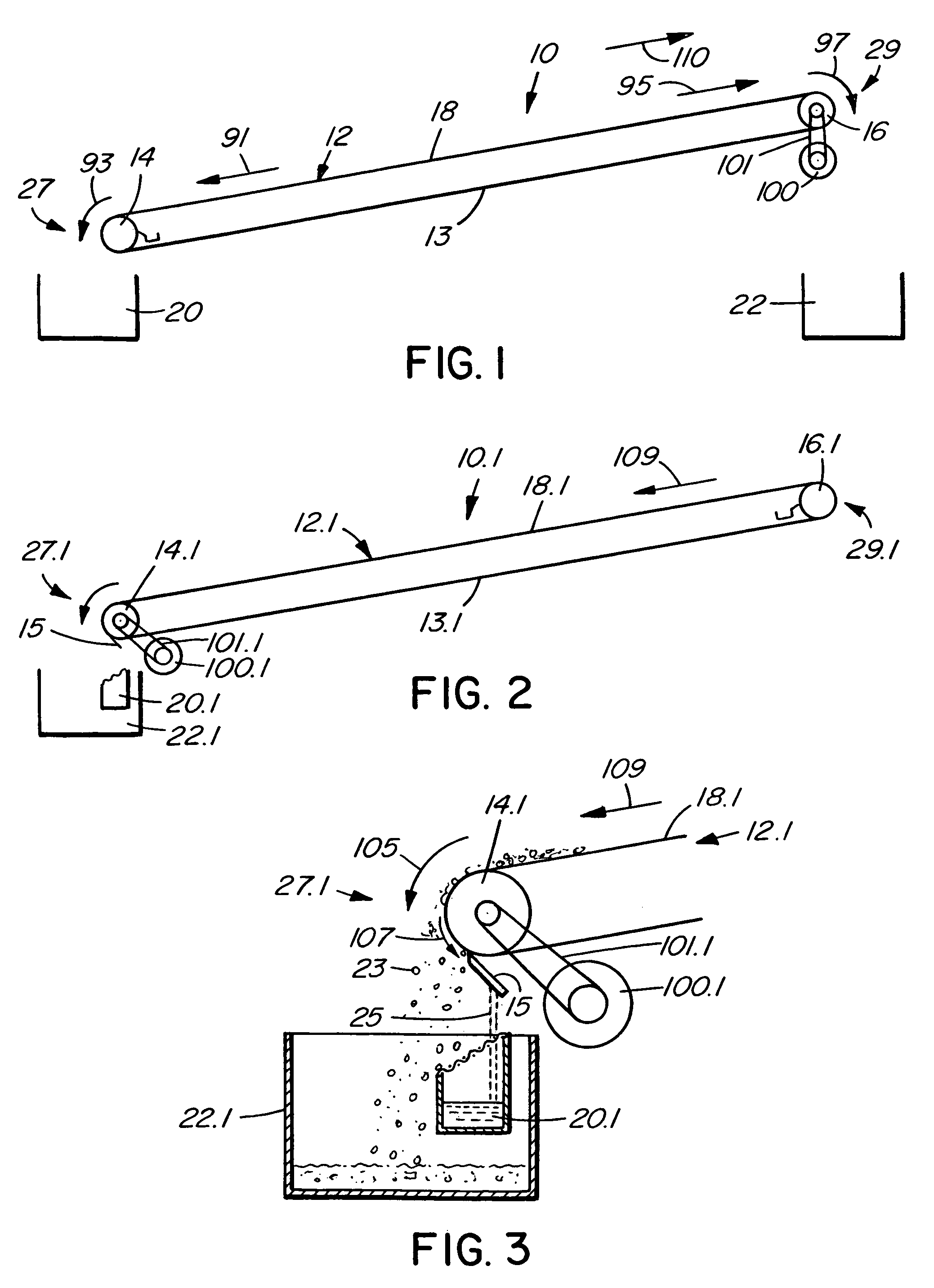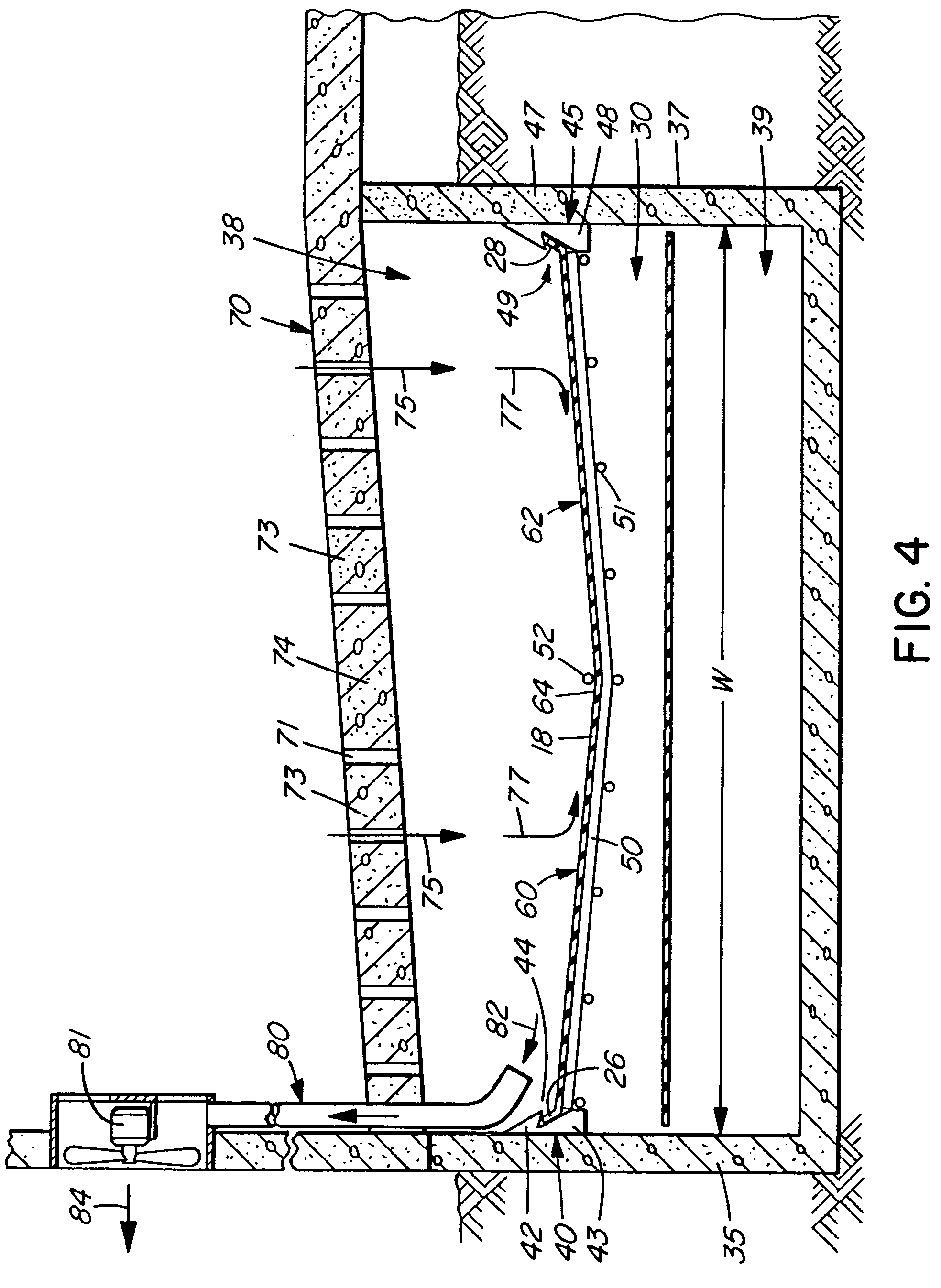Waste collection system for separating liquid waste from solid waste
a waste collection and solid waste technology, applied in gravity filters, loose filtering material filters, artificial water canals, etc., can solve the problems of hygienic and inoffensive disposal of waste matter, affecting the safety of workers,
- Summary
- Abstract
- Description
- Claims
- Application Information
AI Technical Summary
Benefits of technology
Problems solved by technology
Method used
Image
Examples
Embodiment Construction
[0025]Referring to FIG. 1, there is shown a waste collection system indicated generally by reference numeral 10. In this embodiment of the invention the waste collection system 10 includes a waste material conveyor indicated generally by reference numeral 12. The conveyor 12 comprises an endless imperforate conveyor belt 13 extending around and supported by rollers. The conveyor belt 13 has a upwardly concave upper run 18 which is longitudinally downwardly inclined from an upper, first roller 16 to a lower, second roller 14. There is a liquid waste collector 20 located beneath the conveyor belt 13, in the vicinity of the lower roller 14. There is a solid waste collector 22 located beneath an upper end 29 of the conveyor 12, in the vicinity of the upper roller 16. In this embodiment of the invention the solid waste collector 22 is an upwardly open container or bin. However, in other embodiments of the invention the solid waste collector may alternatively be a second conveyor.
[0026]As...
PUM
| Property | Measurement | Unit |
|---|---|---|
| population density | aaaaa | aaaaa |
| land area | aaaaa | aaaaa |
| current | aaaaa | aaaaa |
Abstract
Description
Claims
Application Information
 Login to View More
Login to View More - R&D
- Intellectual Property
- Life Sciences
- Materials
- Tech Scout
- Unparalleled Data Quality
- Higher Quality Content
- 60% Fewer Hallucinations
Browse by: Latest US Patents, China's latest patents, Technical Efficacy Thesaurus, Application Domain, Technology Topic, Popular Technical Reports.
© 2025 PatSnap. All rights reserved.Legal|Privacy policy|Modern Slavery Act Transparency Statement|Sitemap|About US| Contact US: help@patsnap.com



